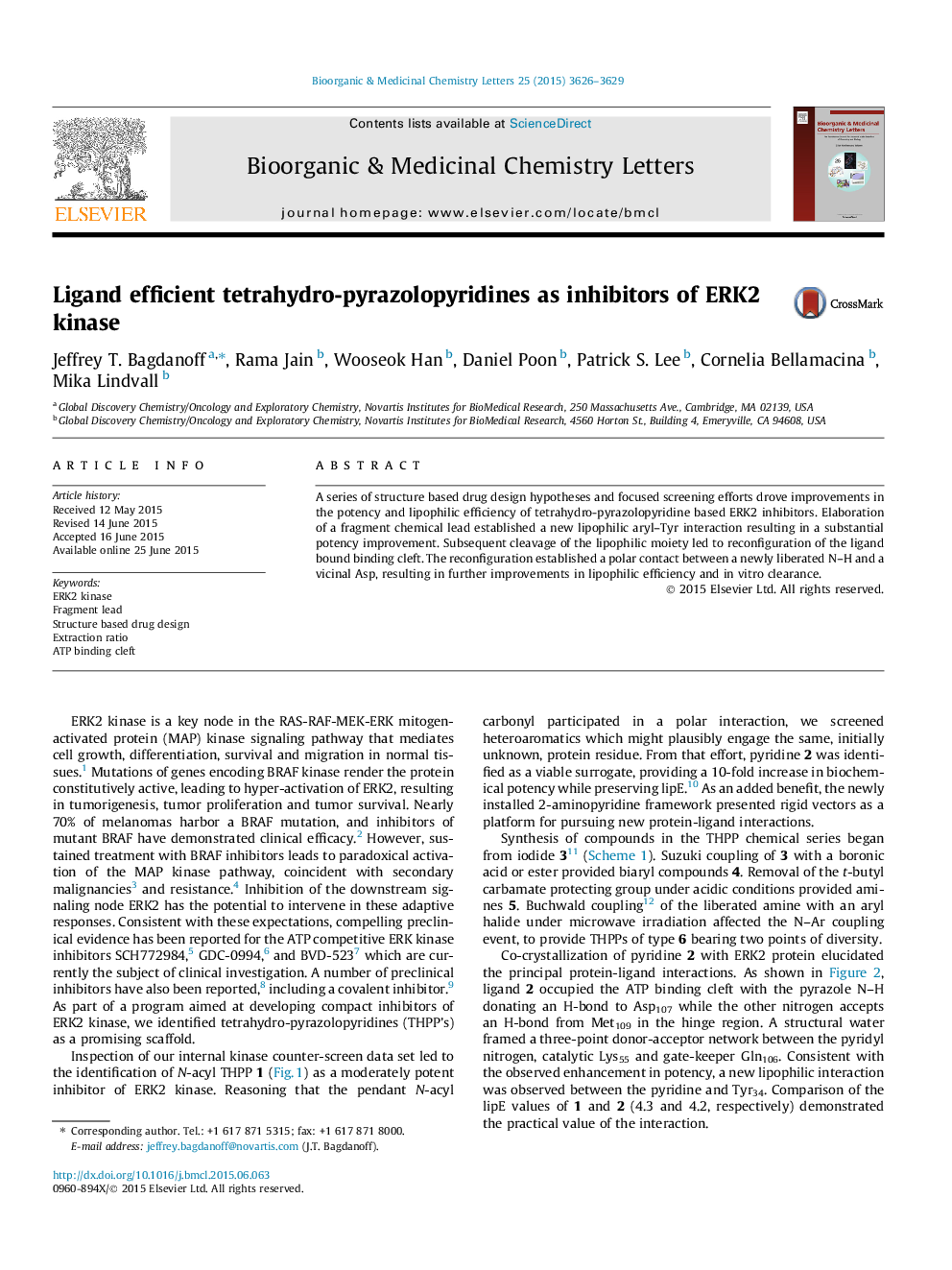| Article ID | Journal | Published Year | Pages | File Type |
|---|---|---|---|---|
| 1370547 | Bioorganic & Medicinal Chemistry Letters | 2015 | 4 Pages |
Abstract
A series of structure based drug design hypotheses and focused screening efforts drove improvements in the potency and lipophilic efficiency of tetrahydro-pyrazolopyridine based ERK2 inhibitors. Elaboration of a fragment chemical lead established a new lipophilic aryl–Tyr interaction resulting in a substantial potency improvement. Subsequent cleavage of the lipophilic moiety led to reconfiguration of the ligand bound binding cleft. The reconfiguration established a polar contact between a newly liberated N–H and a vicinal Asp, resulting in further improvements in lipophilic efficiency and in vitro clearance.
Graphical abstractFigure optionsDownload full-size imageDownload as PowerPoint slide
Related Topics
Physical Sciences and Engineering
Chemistry
Organic Chemistry
Authors
Jeffrey T. Bagdanoff, Rama Jain, Wooseok Han, Daniel Poon, Patrick S. Lee, Cornelia Bellamacina, Mika Lindvall,
